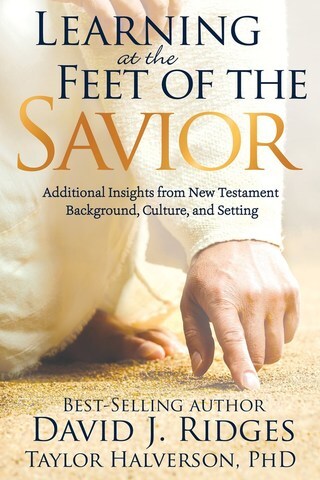The following has been republished with permission fromtaylorhalverson.com.
Reading the KJV translation of John 1:18, we encounter this puzzling phrase “No man hath seen God at any time."
Has a woman seen God?
The original Greek of John 1:18 would be more accurately translated as “no one [whether male or female] has seen God at any time”. But the JST clarifies “And no man hath seen God at any time, except he hath borne record of the Son; for except it is through him no man can be saved.” We have plenty of examples of men seeing God.
Still, the English translation “No man hath seen God at any time” encourages us to ask, where in scripture do we have examples of a woman seeing God?
Did Eve see God?
If we take the Old Testament as our guide, we don’t have precise clarity that Eve saw God. We know that she heard His voice in the Garden and talked with Him (Genesis 3:8). Modern day revelation brings greater understanding.
Moses 5:4 teaches that after the Fall, Adam and Eve no longer saw God because “they were shut out of his presence.” That leaves us to conclude that before the Fall, Adam and Eve had direct, face-to-face communion with God.
Eve saw God.
Did Abish see God?
One of the unexpected stories in scriptures is that of missionary-minded Abish in the Book of Mormon. As a servant to the Lamanite king, we would not expect her to know anything about the gospel. Surprisingly, after the Lamanite king and his household fell to the ground converted through the preaching of Ammon, Abish saves the day from a menancing mob.
Mormon introduces Abish in this manner, “They had all fallen to the earth, save it were one of the Lamanitish women, whose name was Abish, she having been converted unto the Lord for many years, on account of a remarkable vision of her father” (Alma 19:16).
Intriguingly, Abish’s name in Hebrew likely means “Father is a Man”, though a strange name for sure since every father is a man.
Significantly, ancient scripture writers often used the names of individuals as a key theme or world play in the story, as I’ve written about here, here, and here.
What does this mean for the Abish story? Her name may be a witness of what she experienced in a vision–that “[God the] Father is Man.”
Stunningly that would make Abish one of the few recorded women who in scripture who has seen God!
Abish saw God (I believe).
Who Can See God?
It is God’s pleasure to be in convenantal relationship with us. He wants to see us. And He wants us to see Him.
If we turn to the story of Moses and the Israelites at Sinai, we learn that God saved the Israelites from Egyptian bondage so that He could invite them into His presence, to see Him. God instructed Moses and the Israelites “And be ready against the third day: for the third day the Lord will come down in the sight of all the people upon mount Sinai” (Exodus 19:11, emphasis added).
Unfortunately, due to fear and a lack of faith, the Israelites rejected the opportunity to see God (Exodus 20:18-21 and D&C 84:19-24).
Someone who exercised their faith to overcome fear to see God was the brother of Jared. We learn from his example that those with their hearts right before God and with faith can be brought back into His presence to see His face.
The brother of Jared said to God, “Yea, Lord, I know that thou speakest the truth, for thou art a God of truth, and canst not lie. And when he had said these words, behold, the Lord showed himself unto him, and said: Because thou knowest these things ye are redeemed from the fall; therefore ye are brought back into my presence; therefore I show myself unto you.” (Ether 3:12-13).
Can We See God?
Yes!
I think that words from the musical Les Misérables best expresses the truth about how we see the face of God:
To love another person is to see the face of God.
And love is the essence of all God’s covenants.
Lead image from Getty Images
Learning at the Feet of the Savior
I hope you found these insights valuable and empowering. If so, you may find more such insights in one of my recent books.
Together with my co-author David Ridges, we wrote Learning at the Feet of the Savior: Additional Insights from New Testament Background, Culture, and Setting to encourage people to ask questions and to use the scriptures and the example of Jesus to learn how to learn and to better understand how the scriptures apply to their lives.



